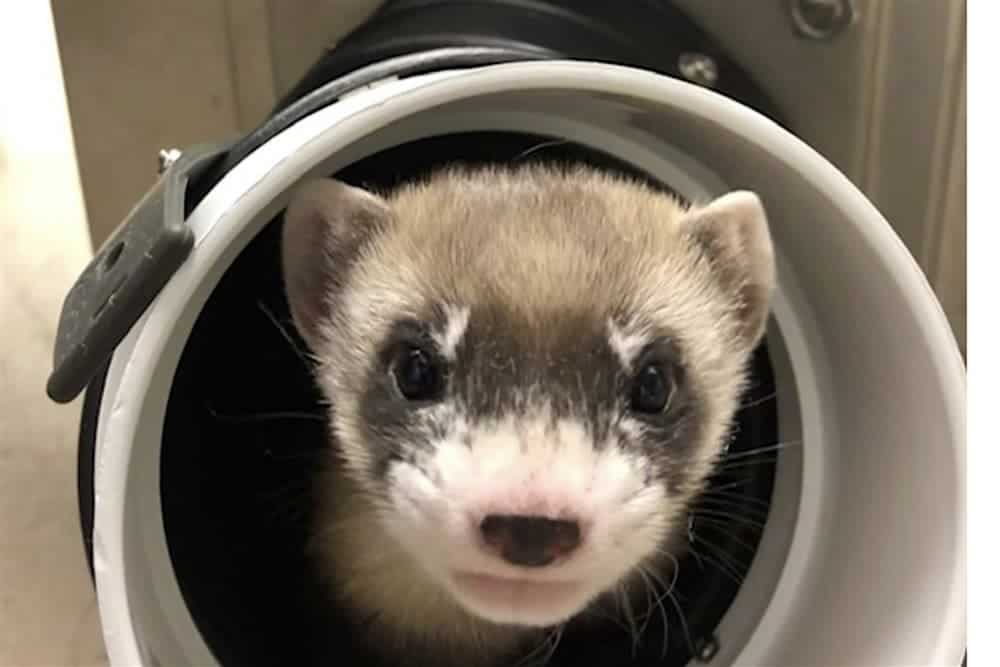
Scientists have resurrected a black-footed ferret after it died more than three decades ago — well, sort of. Using modern techniques, the dead ferret’s DNA was used to produce a perfectly healthy clone, marking the first time scientists have cloned an endangered species in the United States.
This cute clone, named Elizabeth Ann, was born on December 10 at a Fish and Wildlife Service black-footed ferret breeding facility in Fort Collins, Colorado. She was cloned from the genetic material of a ferret called Willa who died in 1988 and whose DNA was frozen until recently.
Elizabeth Ann looks healthy and loveable, but unlike her domestic ferret foster mother, she’s a wild creature — so a bit unpredictable and potentially dangerous to handle. At least, she’s keeping her human caretakers on their toes.
“You might have been handling a black-footed ferret kit and then they try to take your finger off the next day,” Pete Gober, U.S. Fish and Wildlife Service black-footed ferret recovery coordinator, said in a statement for AP. “She’s holding her own.”
The black-footed ferret (Mustela nigripes), also known as the American polecat or Prairie Dog Hunter, is a species of mustelid native to central North America. These weasel-like creatures are among the most endangered mammals in North America and are the only ferret species native to the continent.
They’re so rare that people actually thought they went extinct until 1981 when some black-footed ferrets were found on a Wyoming ranch by a dog named Shep.
Since then, the U.S. Fish and Wildlife Service has been running captive breeding and release programs designed to restore the species to the wild. Unfortunately, it’s difficult to sustain populations without the ferrets’ main source of food, prairie dogs. Over the past century, more than 95% of prairie dog colonies have been wiped out by habitat loss and disease.
After releasing thousands of ferrets and dozens of sites in the western U.S., Canada, and Mexico since the 1990s, the U.S. Fish and Wildlife Service is trying something different — cloning.
Cloning is the process of making a genetically identical organism through nonsexual means. At its simplest, cloning works by taking a genetic part of an organism, such as its genome from frozen tissue, and recreating it in another place, such as in the egg of a domestic ferret.
The first successful animal cloning occurred more than twenty years ago when scientists in Scotland revealed to the world Dolly the sheep. Since then, cloning techniques have improved vastly to the point it’s now pretty commercial. For instance, there are farms in the U.S. that clone cows and some businesses even offer to clone your pet. One British couple, for instance, made headlines in 2017 after spending £67,000 on cloning their dead dog after sending the DNA to a company in South Korea.
Elizabeth Ann was cloned by a Texas-based company called Viagen, under the coordination of Revive & Restore, a wildlife conservation organization focused on biotechnology.
The idea is to have Elizabeth Ann and future clones form a new line of black-footed ferrets that will strengthen current conservation programs rather than replace them. For now, Elizabeth Ann will remain at a facility at Fort Collins for study with no immediate plans for release in the wild.
Ben Novak, lead scientist with Revive & Restore, says that the same approach might one day be used to bring back extinct animals from the dead, such as the passenger pigeon.









